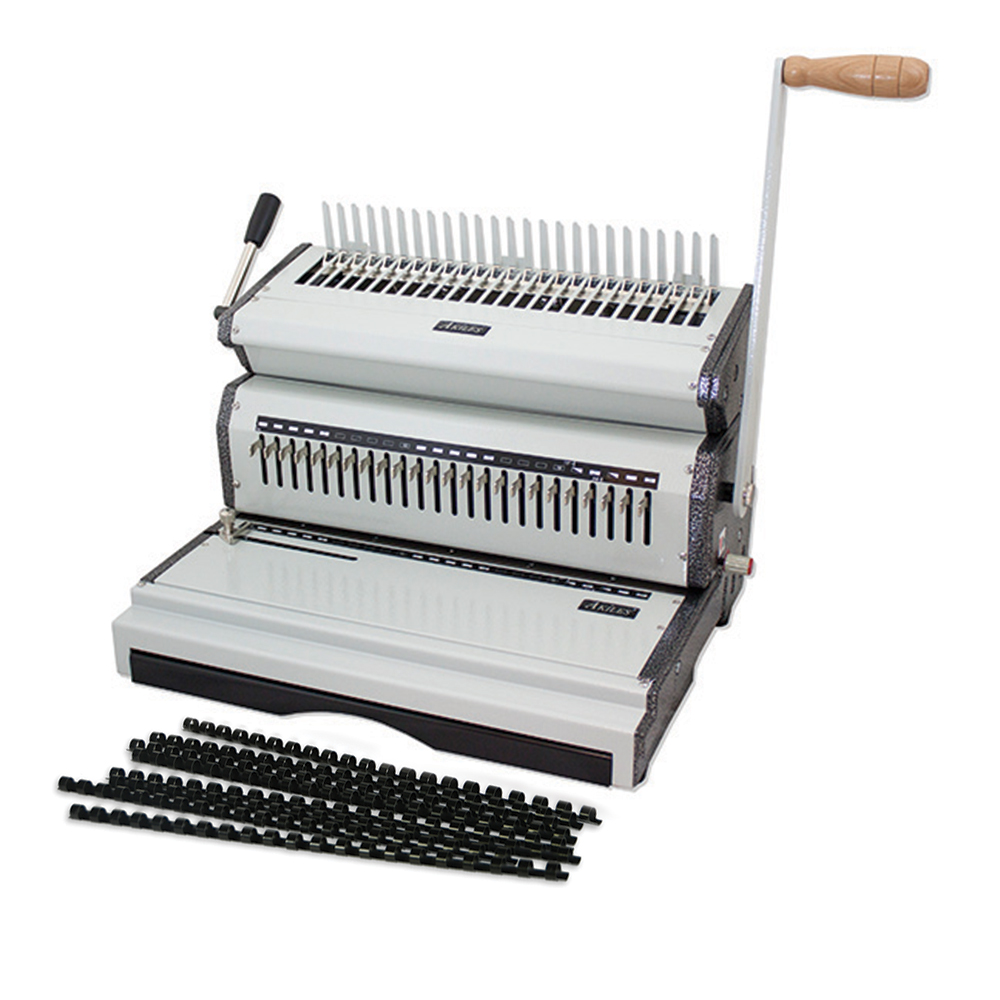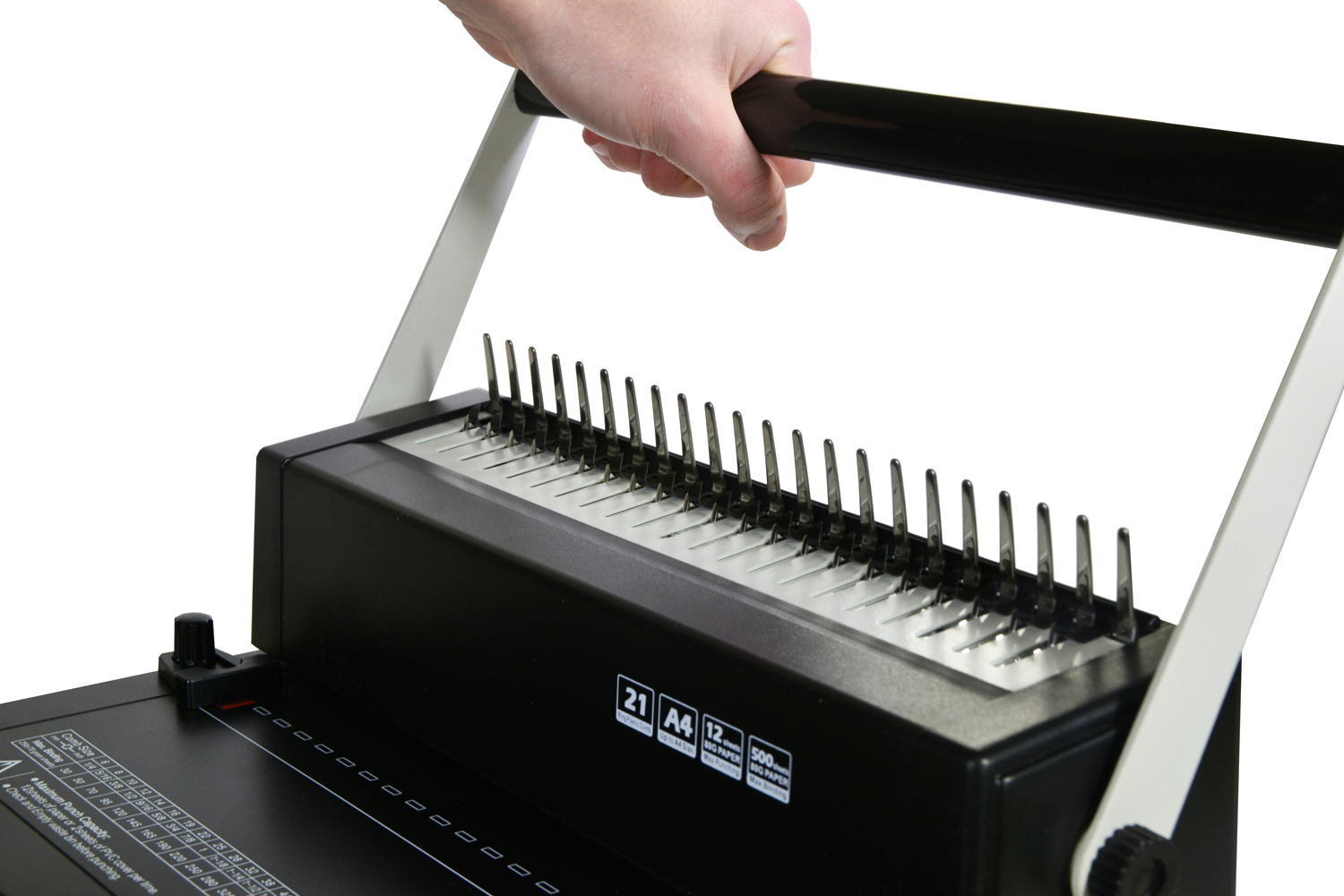
8 Maintenance Tips For Your Comb Binding Machine
Maintaining the peak performance of your comb binding machine is crucial for ensuring smooth and efficient document binding processes. Regular upkeep not only prolongs the lifespan of your equipment but also contributes to the production of professional-looking bound documents. In this article, we delve into essential maintenance tips for your comb binding machine, offering insights on keeping it in optimal condition and avoiding common issues that may arise during regular use. Whether you’re a small office, educational institution, or printing service provider, these tips will empower you to maximize the functionality and longevity of your comb binding machine.
What is a Comb Binding Machine?
A comb binding machine is a specialized device designed for securely binding documents using plastic comb bindings. Also known as Cerlox or plastic comb binding, this method involves inserting a series of plastic comb spines through closely spaced rectangular holes along the edge of the document. The comb’s teeth then interlock with the punched holes, creating a durable and easily readable bound document. Comb binding machines are commonly used in offices, print shops, and educational institutions to create professional-looking reports, presentations, manuals, and other multi-page documents. These machines typically include features for punching holes in the paper and inserting the plastic combs, providing a convenient and efficient solution for document binding.
Why Maintenance Is Important?
Regular maintenance for comb binding machines is essential to ensure optimal performance, an extended lifespan, and consistent output quality. Well-maintained components, such as punching dies and alignment mechanisms, contribute to smooth and efficient document binding, resulting in neatly punched holes and securely bound documents. This proactive approach not only safeguards your investment but also prevents potential issues such as paper jams and misalignments, minimizing the risk of interruptions during binding tasks.
Furthermore, routine maintenance is a cost-effective strategy that can lead to significant savings. By addressing minor issues early on, you can avoid costly repairs or replacements and extend the overall lifespan of the machine. This approach also enhances user safety, as well-maintained equipment is generally safer to operate. In summary, regular maintenance is a fundamental practice that not only ensures the consistent performance of comb binding machines but also promotes cost savings, user safety, and a prolonged operational life for these critical document-binding tools.
8 Maintenance Tips for Comb Binding Machine
Proper maintenance of your comb binding machine is essential to ensure its longevity and efficient performance. Here are some valuable tips to keep your comb binding machine in optimal condition:
- Regular Cleaning: Dust and debris can accumulate on the punching die and other components over time, affecting the machine’s performance. Regularly clean the machine with a soft brush or cloth to remove buildup.
- Punching Capacity: Be mindful of the machine’s punching capacity. Avoid overloading it with more sheets than recommended, as this can strain the motor and lead to premature wear. Consult the machine’s manual for the recommended punching capacity.
- Sharp Punching Dies: The punching dies are crucial for creating clean and precise holes. Ensure that the dies remain sharp by periodically inspecting them. If you notice any signs of dullness or damage, consider replacing the dies.
- Proper Lubrication: Some comb binding machines benefit from periodic lubrication to maintain smooth operation. Consult the user manual to determine if your machine requires lubrication and, if so, use the recommended lubricant sparingly.
- Correct Paper Size and Weight: Use paper within the recommended size and weight limits specified by the manufacturer. Using paper that exceeds the machine’s capacity can lead to jams and increased wear on the components.
- Storage: When not in use, store your comb binding machine in a clean and dry environment. Avoid exposing it to extreme temperatures or humidity, as these conditions can adversely affect its performance.
- Check Comb Opener: If your machine includes a comb opener, periodically check its alignment and functionality. Ensure that it opens and closes smoothly, and adjust or lubricate as needed.
- Regular Inspections: Conduct routine inspections of the entire machine, checking for loose screws, misalignments, or any signs of wear. Address any issues promptly to prevent further damage.
By incorporating these maintenance practices into your routine, you can extend the lifespan of your comb binding machine and ensure that it continues to produce professional and neatly bound documents.
Implementing these maintenance tips for your comb binding machine is a proactive step toward ensuring its longevity and peak performance. By incorporating regular cleaning, monitoring punching capacity, lubricating when necessary, and conducting thorough inspections, you safeguard your investment and contribute to the production of professional and seamlessly bound documents. Remember, a well-maintained comb binding machine not only extends its lifespan but also enhances its efficiency, allowing you to achieve high-quality results in your document binding endeavours consistently. Stay diligent in your maintenance routine, and your comb binding machine will continue to be a reliable and indispensable tool for creating polished and professionally bound documents.
Are you a business owner seeking to enhance your document-binding capabilities? Our range of comb binding machines is designed to meet the diverse needs of offices, educational institutions, and printing services. Contact us now to find the ideal comb binding machine for your business needs.










